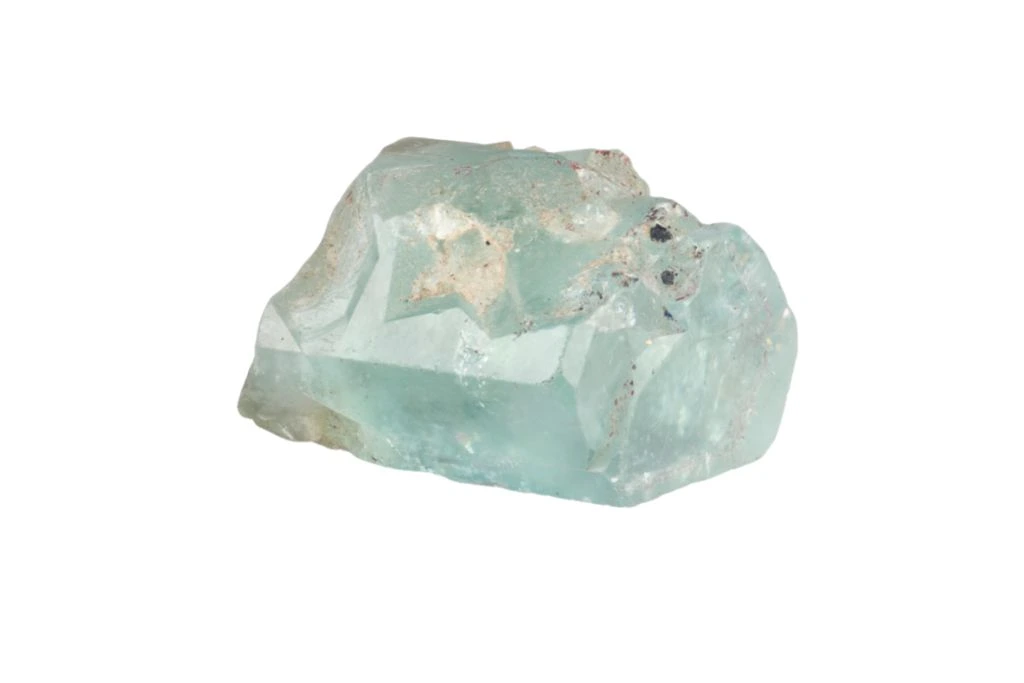Color and Clarity of Aquamarine
Aquamarine, true to its name, exhibits a stunning range of blue hues reminiscent of clear seawater. Its color spectrum spans from pale sky blue to deep sea blue, with the most prized specimens displaying a rich, intense blue tone. The gem’s exceptional clarity is one of its defining features, as it typically forms with very few inclusions, resulting in a remarkably transparent appearance.
Crystal Structure and Form
Belonging to the beryl mineral family, aquamarine crystals typically form in a hexagonal structure. These crystals can grow quite large, sometimes reaching impressive sizes of several inches or even feet in length. The gem often occurs as long, prismatic crystals with well-defined faces and smooth surfaces, making it highly desirable for both collectors and jewelers.
Unique Physical Characteristics
One of aquamarine’s most distinctive traits is its pleochroism, which means it can display different colors when viewed from various angles. This optical phenomenon adds depth and complexity to the gem’s appearance. Additionally, aquamarine exhibits a vitreous or glass-like luster, enhancing its brilliance and sparkle when cut and polished.
Notable Features
Aquamarine stands out for its excellent durability, ranking 7.5 to 8 on the Mohs scale of hardness. This makes it resistant to scratches and suitable for everyday wear in jewelry. The gem also possesses a unique ability to retain its color even under artificial light, maintaining its beauty in various settings. Some specimens may contain inclusions of long, hollow tubes or channels, creating a cat’s eye effect when cut en cabochon, further adding to the gem’s allure and versatility.
Historical and Cultural Significance of Aquamarine
Aquamarine has been revered throughout history for its calming blue hues reminiscent of the sea. Ancient mariners believed it would protect them during long voyages, often carrying it as a talisman against the perils of ocean travel. In Roman times, the stone was associated with Neptune, god of the sea, further cementing its connection to water and maritime lore. Many cultures have prized aquamarine for its supposed ability to enhance communication and foster harmony in relationships.
Metaphysical Associations
In the realm of crystal healing and metaphysics, aquamarine is often associated with the throat chakra, believed to facilitate clear communication and self-expression. It is thought to promote inner peace, reduce stress, and calm the mind. Some practitioners claim that aquamarine can help alleviate fears and phobias, particularly those related to water. The stone is also believed to enhance intuition and spiritual awareness, making it a popular choice for meditation and mindfulness practices.
Common Uses and Benefits
Aquamarine is widely used in jewelry, prized for its clarity and range of blue tones. Beyond adornment, it finds applications in alternative healing practices. Crystal enthusiasts use aquamarine in grid layouts, carry it as a worry stone, or place it in living spaces to promote a sense of calm. In modern times, some use aquamarine-infused water (created by placing the stone near, not in, water) as a tonic for purification and clarity. The stone is also popular in feng shui, used to activate the water element and promote flow and relaxation in home or office environments.

